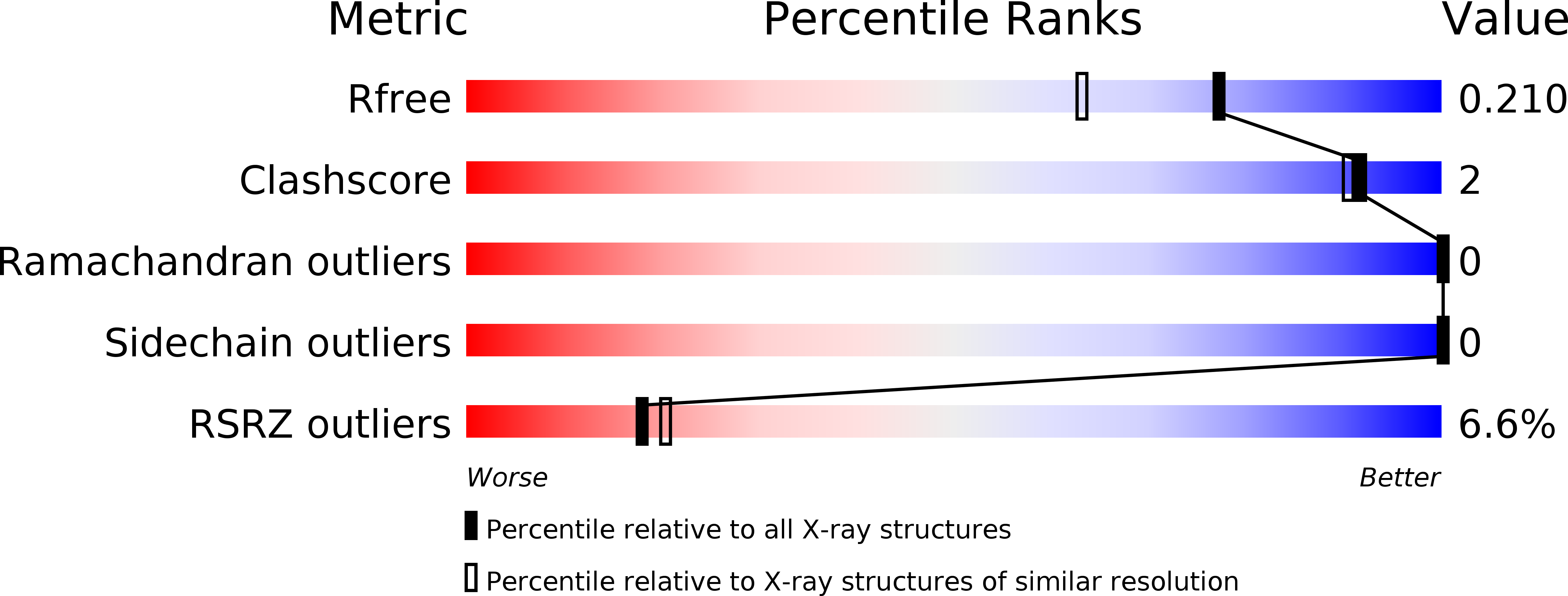Structural basis of a novel PD-L1 nanobody for immune checkpoint blockade.
Zhang, F., Wei, H., Wang, X., Bai, Y., Wang, P., Wu, J., Jiang, X., Wang, Y., Cai, H., Xu, T., Zhou, A.(2017) Cell Discov 3: 17004-17004
- PubMed: 28280600
- DOI: https://doi.org/10.1038/celldisc.2017.4
- Primary Citation of Related Structures:
5JDR, 5JDS - PubMed Abstract:
The use of antibodies to target immune checkpoints, particularly PD-1/PD-L1, has made a profound impact in the field of cancer immunotherapy. Here, we identified KN035, an anti-PD-L1 nanobody that can strongly induce T-cell responses and inhibit tumor growth. The crystal structures of KN035 complexed with PD-L1 and free PD-L1, solved here at 1.7 and 2.7 Å resolution, respectively, show that KN035 competes with PD-1 (programmed death protein 1) for the same flat surface on PD-L1, mainly through a single surface loop of 21 amino acids. This loop forms two short helices and develops key hydrophobic and ionic interactions with PD-L1 residues, such as Ile54, Tyr56 and Arg113, which are also involved in PD-1 binding. The detailed mutagenesis study identified the hotspot residues of the PD-L1 surface and provides an explanation for the stronger (~1 000-fold) binding of KN035 to PD-L1 than PD-1 and its lack of binding to PD-L2. Overall, this study reveals how a single immunoglobulin-variable scaffold of KN035 or PD-1 can bind to a flat protein surface through either a single surface loop or beta-sheet strands; and provides a basis for designing new immune checkpoint blockers and generating bi-specific antibodies for combination therapy.
Organizational Affiliation:
Hongqiao International Institute of Medicine, Shanghai Tongren Hospital/Faculty of Basic Medicine, Key Laboratory of Cell Differentiation and Apoptosis of The Chinese Ministry of Education, Shanghai Jiao Tong University School of Medicine , Shanghai, China.


















